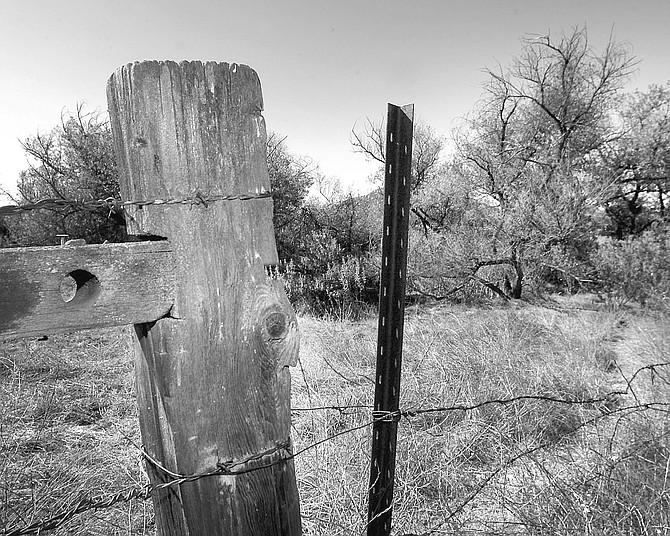
Outside the Cagney ranch, the rest of the grassland is broken into plots as large as 1100 and 1600 acres possessed by only four or five longtime owners.
- Broad, open grasslands in the topography of San Diego County are the exception to the norm, which is chaparral-covered mesas and barrancas. And most of the natural grasslands, Mission Valley for example, have been developed. Two notable exceptions are the plains northeast of Lake Henshaw and the Ramona grasslands west of the town of Ramona. And a recent purchase by the Nature Conservancy, a wildlife conservation group, will ensure that at least part of the latter stays undeveloped.
- By Ernie Grimm, Dec. 18, 2003
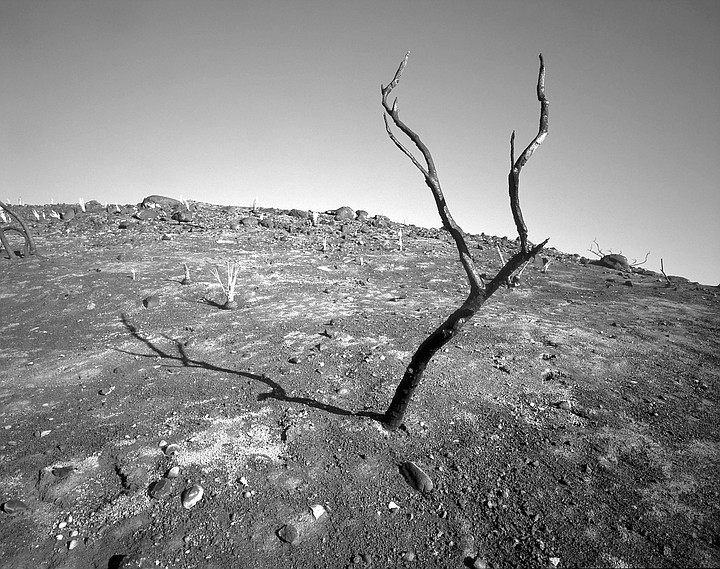
"We thought that the firefighters would try to hold the line at Wildcat Canyon Road and at Barona Casino, to the east of the ridge above Kimball Valley."
- “I dreamed that we had a fountain on our roof,” she said. “We’d just push this button and out would come this spray of water, pssssssht, far up into the air and all over the house.” We both laughed at the idea. Ramona is a hot place, and for some reason our home’s little microclimate is a bit hotter still. We’ve seen 100 degrees in February and had highs in the 100s for a week straight.
- By Joseph Mitchell, April 29, 2004
- Most of the countryside north of Ramona is still rugged and beautiful. Vaulting hills pull the view up toward the blue sky, wide valleys pull the view out toward the distant horizon, and a litter of boulders pops up periodically among the pervasive ground-covering green. But just outside downtown Ramona, a mile or two after Magnolia Avenue turns into Black Canyon Road, you turn left onto Stokes Road and head up into Rolling Hills Estates.
- By Geoff Bouvier, July 23, 2008
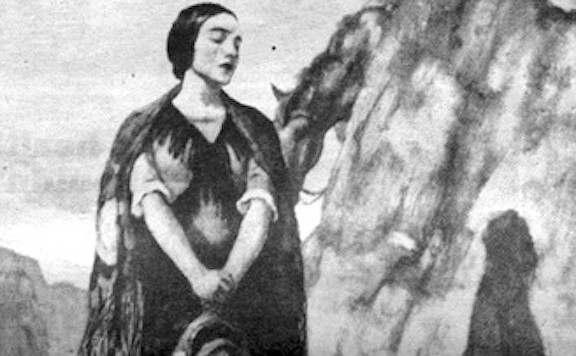
"Once I was at a dinner where I was given an award for Helen’s biography, and afterwards a woman told me she owned a chair in which the real Ramona had sat."
- During late winter and early spring of every year, a bit of confusion reigns up north in the town of Ramona. The folks at the chamber of commerce there get a rash of long-distance phone calls and upwards of twenty-five letters a day — many of them with checks enclosed — from people all over the nation who want to buy tickets to the Ramona Outdoor Pageant, which they believe to be held each spring in the town of Ramona.
- By Roger Anderson, Sept. 29, 1988

It took 30 firefighters several hours to put out the fire at Kurtenbach’s home on North Woodson Drive.
- John Nesheiwat was parked in his car, a rosary on the seat beside him, about a mile from the North Woodson Drive rental home owned by James Kurtenbach, a 4000-square-foot luxury house in one of the few but posh golf-course communities next to Ramona. Minutes before, John had dropped off his younger brother Joe — an amiable 24-year-old, with short-cropped hair and an Arabic tattoo on his arm, who was about to do a big favor for Kurtenbach.
- By Thomas Larson, Oct. 5, 2011

Valley Charter High
- San Diego — First it was a country/western restaurant and dance hall. When that failed, it became a biker restaurant called the Roadhouse. For the past year, the low white building on the west end of Ramona's main street has housed Sun Valley Charter High School. But come fall, "For Lease" signs may go up in the windows again.
- By Ernie Grimm, June 19, 2003
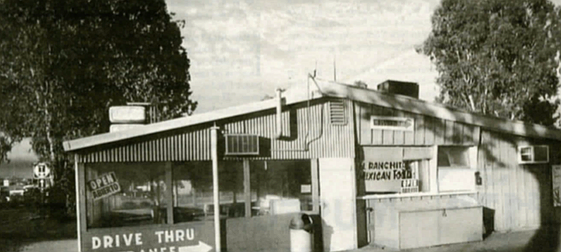
El Ranchito taco shop (formerly Edens Drive-in). I walk around the west side, studying my father’s carpentry. Beneath this orange enamel crap is virgin redwood!
Photo by Robert Burroughs
- Monday, November 2, 1992. La Noche de las Velas. Can You Go Home Again?
- I flew from Asheville, North Carolina, the town made famous by Thomas Wolfe's book You Can't Go Home Again and ancestral home of my maternal grandfather, Guy Clarke, of Scotslrish-Cherokee descent, to Los Angeles, then drove to Ramona, my hometown in northeastern San Diego County, arriving after 1:00 a.m., November 3, 1992 — Election Day!
- By Sharon Doubiago, July 14, 1994
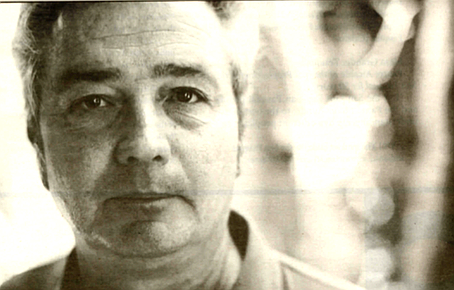
Ronnie Rodolf: “God, Sharon. You’re just like in high school.”
Photo by Robert Burroughs
- Friday, November 6, 1992 They
- Pulling the shades to see the blue mountains. That they escaped there, into them.
- That I didn’t know this before. That the core Mesa Grande Indians are the original Ramona Indians, that they are Iipai. That Ramona was Pamo, is “in the pamo," which means “bighorn sheep watering place.” Which means “a hole worn in the rock by water.”
- By Sharon Doubiago, July 21, 1994
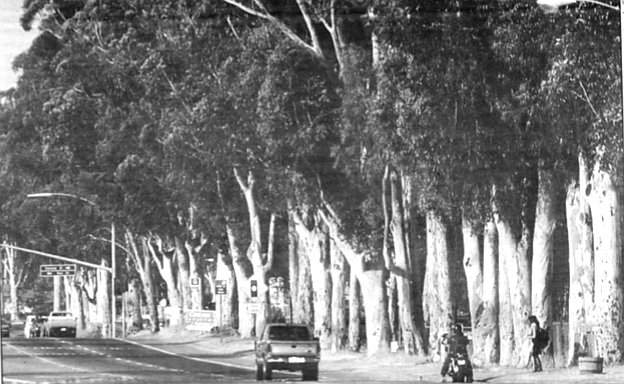
Coming down 67 through the line of eucalyptus is probably Ramona’s most famous trademark. “They’re going to have to do something — plant a second row. Road’s got to be widened.”
Photo by Robert Burroughs
- Monday, November 9, 1992
- “San Diego Estates,” Mama says on the phone, “was zoned for 'second housing.’ They couldn’t zone it for regular housing because of no water — it was the only way they could get it through. It was a big laugh, building those huge homes. Ray Watts would come to the drive-in. I can see him now. Daddy and Ray had an affinity. He told him the whole story, how he was going to get San Diego Estates through lobbying.
- By Sharon Doubiago, July 28, 1994
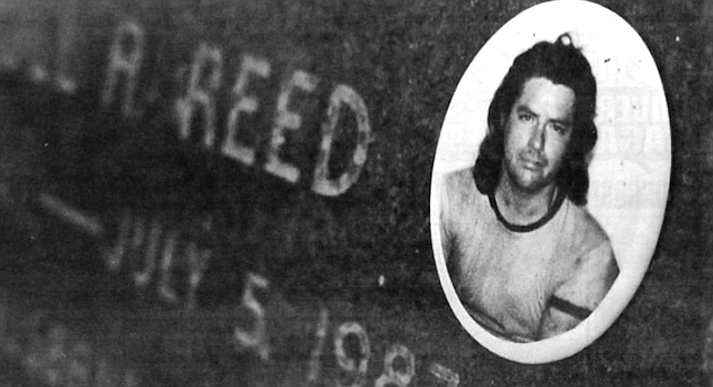
Karoll Reed tombstone, Ramona cemetery. I’m overwhelmed, paralyzed.
Photo by Robert Burroughs
- Thursday, November 12, 1992
- The Ramona Sentinel comes out on Thursdays. Larry Littlefield’s sports page is impressive, both in the quality of writing and the depth of the coverage, but I wonder, how can he get away with some of the things he says? He reports an open rebellion of the players on the return bus from Escondido last week, after losing to “a team Ramona had beaten five straight years.”
- By Sharon Doubiago, Aug. 4, 1994
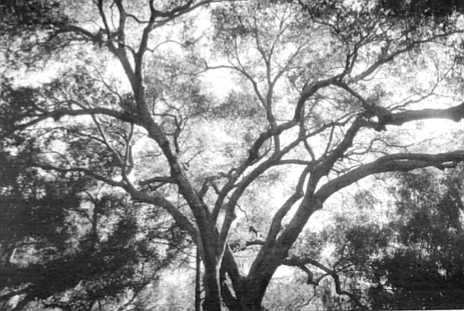
The honor camp truck wrapped around the oak, 17 sprawled bodies.
- Saturday, November 14, 1992. Mi hija Shawn’s 29th birthday.
- [Ramon] traces for me the course of the underground river. It flows directly under your house he says. How can you tell? He becomes fierce like I've insulted him. I know! I know this land. I’ve slept over it. The river is enormous. I can hear water falling through granite hundreds of feet below. They shouldn’t bring water from the Colorado. It's wrong.
- By Sharon Doubiago, Aug. 11, 1994
 Facebook
Facebook
 X
X
 Instagram
Instagram
 TikTok
TikTok
 Youtube
Youtube




















